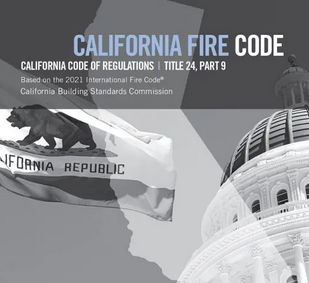Fire Code Inspection
Learn what inspectors look for and how to prepare for a fire code safety inspection.
What to expect 
The campus fire marshal is responsible for conducting fire inspections of all occupied campus facilities. Inspections focus on compliance with fire and life safety regulations including Title 19 of the California Code of Regulations and the California Fire Code, as well as campus policies. The campus fire marshal provides two types of inspections:
- Onsite inspections are conducted by campus fire marshal staff. The focus of these inspections is to determine that fire protection systems are properly maintained, tested, and certified, and that exit pathways are free from obstruction, properly marked, and illuminated. These inspections are required for occupancies that present a high hazard and must be completed annually.
- Self-inspection forms are provided for low-hazard occupancies. These forms provide an opportunity for campus staff to better understand the fire safety aspects of their workspace while reducing the time required to complete the inspections for both the campus fire marshal and building staff. Self-inspection forms are provided every two to three years.
Fire safety is a year-round commitment. In order to maintain this commitment, copies of the fire inspection forms are provided below for reference. A work area fire safety checklist is also provided to help determine if your personal office space or work area is fire-safe.
Fire inspection forms
- On-site Inspection Form
- Self-Inspection Form
- Work-Area Fire Safety Checklist
- Visit MyResearchSafety for Audit and other DSO Inspection Tools related to Laboratory Fire Safety Inspections.
Fire code violations put everyone at risk. Learn to recognize the top UCSD campus violation fire hazards below and how to correct them:
Corridors, Stairways, and Exits
Obstructed exit corridors and stairways prevent rapid evacuation and firefighter response. Clear exiting offers safe and smoke-free passage out of the building. Corridors and stairways must remain clear at all times and contain no storage.
Check for and correct:
- Corridors obstructed by supplies and equipment
- Unapproved furniture placement (tables/chairs)
- Recycling bins left in the exit corridor
- Unclaimed mail and parcel deliveries
- Stairways used to store supplies
For more info, see Corridor Safety Requirements.
Fire Doors
Fire doors save lives by reducing the spread of smoke and fire. Fire-rated doors must close and latch. Only electric hold-open devices tied to the building fire alarm are permitted.
Check for and correct:
- Wedges, hooks, or other means of preventing fire doors from closing
- Taping over door latches or strike plates
- Propping doors open with equipment, etc
For more info, see Fire Doors.
Electrical Safety
Extension cords and power strips being used in an unsafe manner are a leading cause of fires.
Check for and correct:
- Maintain 36 inches clearance in front of electrical panels, floor to-ceiling
- No Daisy Chains: Extension cords or power strips must ONLY be plugged directly into an electrical wall outlet.
- Extension cords must not go through walls or under doors or rugs and floor mats
- Large amperage appliances and heat-producing appliances must be plugged directly into wall outlets
- Fire Preventions discourage the use of personal space heaters and hot-plate use is prohibited.
For more info, see Electrical Safety.
Housing and Housekeeping
Congested working areas limit access for regular cleaning and decluttering. Poor housekeeping also adds unnecessary fire fuel to a building. Only use permitted equipment indoors. Good housekeeping and following the fire requirements are essential in housing, an office, or a lab.
Check for and correct:
- Storage blocking access to firefighting equipment and electrical panels.
- Decorative materials obstructing fire signage and alarms.
- Storage which can affect the safe evacuation of occupants (flammable, explosive, corrosive substances)
- Hazardous items such as halogen lamps, LiPo batteries, and open flames (candles, grills, etc.)
- Unstable stacks of materials (cardboard, paper)
For more info, see Fire Safety Requirements.
Fire Sprinklers and Extinguishers
Fire sprinklers and extinguishers put out fires effectively only when they are not obstructed by storage or fixtures attached to the building.
Check for and correct:
- 18 inches of clearance below sprinkler head, no obstructions
- Nothing is hanging from sprinkler head or sprinkler piping
- Areas in buildings without fire sprinklers require 24 inches of clearance from ceilings
- Fire extinguishers are inspected monthly and not obstructed
For more info, see Fire Sprinklers and Extinguishers.